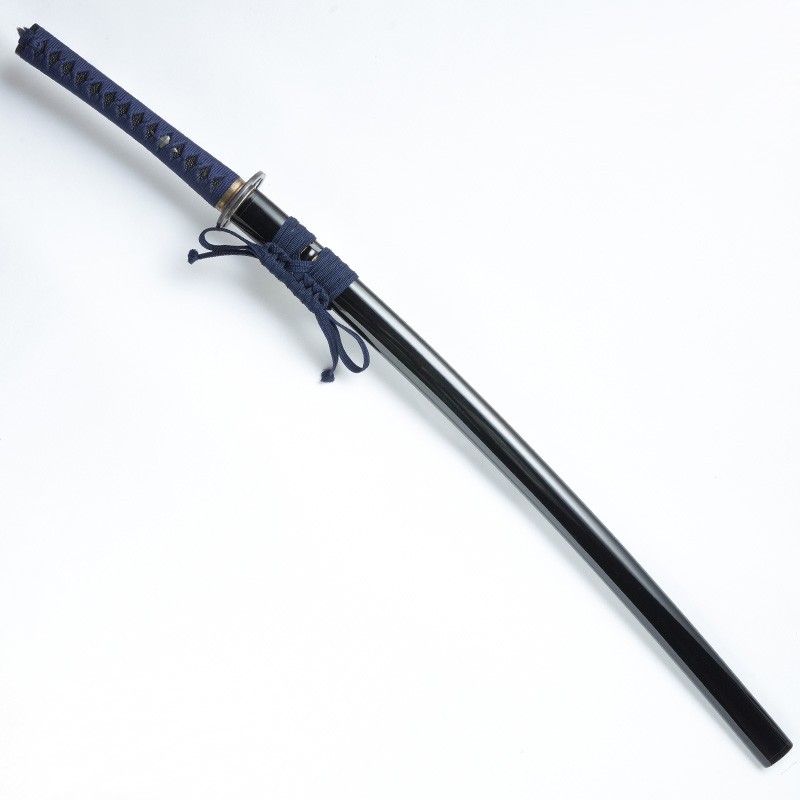














More informations about this product
The Tensho Koshirae 天正拵 montage takes its name from the Tensho 天正 (1573-1592) period, during the Azuchi Momoyama era. The name of this era was given by Oda Nobunaga and is inspired by a Chinese classic «Those who are at peace with Nature relate everything under the sky to its correct model» (清静者為天下正) ; Oda Nobunaga wanting to end the great wars of the lords of the Muromachi period and finally wishing to reunify Japan.
In contrast to the ostentatious montages of the Tachi of the Momoyama period, the Tensho Koshirae is historically the type of montage used for the Uchigatana, the ancestor of the current Katana. It was therefore equipped with simple and practical frames, with a black Same, a leather Tsuka ito, black metal or horn parts. The handle is Ryūgo (立拵 - hourglass-shaped), slightly curved (concave), giving it an easy grip. The Tsuka Ito is knotted in Makikake, over the Tsuka Kashira. Tsuba are simple, iron with openings (Sukashi) and often made by armor makers (Katchūshi).
Tokugawa Ieyasu had two of his Tensho mounted swords, which are very good examples: the Ōtenta-Mitsuyo and the Nikkō Sukezane.
The blade type for this fixture is a light (standard) blade, approximately 820g.
Nagasa length possible from 2.20尺 (66.6cm) to 2.55尺 (77.3cm).
size charts (see attached table of recommended sizes)
Hamon: Suguha (straight line).
Habaki: Shonai (old-fashioned design), made of brass, golden seppa.
Tsuba: Hyotan 瓢箪 (Calabash - Gourd) opening (Sukashi), symbol of luck and prosperity.
Fuchi/ Kashira: Black horn kashira, blackened silver fuchi.
Same: in Galuchat (Roussette or Raie), Black color.
Menuki: Hishi (菱 – Water Shiner, diamond), symbol of vitality and prosperity.
Tsukaito: Pure Midnight Blue Silk Handle Braiding.
Sageo: Pure Midnight Blue Silk.
Saya: Kuroro 黒呂, in glossy black lacquered Magnolia, with gilded Shitodome.
The Minosaka Workshops :
The Iaito we offer come from Minosaka workshops in Gifu, Japan, and are manufactured in their workshop in Japan.
Gifu is one of the top places known for the forging of traditional sabres, including the Mino tradition, dating from the 14th century. Minosaka workshops are Iaito’s leading producers of tradition.
This traditional workshop manufactures its chrome-plated Zamak Iaito (Zinc and Aluminum alloy with some Copper) which is stainless.
This non-ferrous alloy makes the Iaito blunt and unsharpenable:
They are practical tools for Kata, without contact between the blades.
Share your opinion
error Your review appreciation cannot be sent
feedback Report comment
check_circle Report sent
error Your report cannot be sent